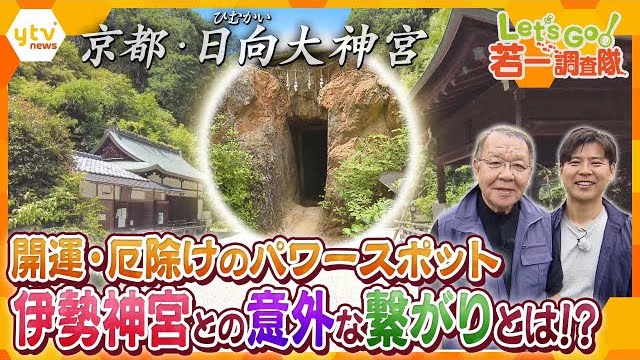KYOTO, Jun 27 (News On Japan) - Located in Kyoto’s Yamashina Ward, Hinata Grand Shrine is renowned for its harmonious integration with nature, making the entire mountain its sacred body. Often compared to the Ise Grand Shrine, it has been cherished by locals as "Kyoto's Ise Shrine" since before Kyoto became the capital.

Hinata Grand Shrine is also reputed to be one of Japan’s unique power spots, with unexpected connections to Ise Grand Shrine.
Recently, this shrine has gained fame as a power spot, while also being one of the oldest in Kyoto. Known for its strong ties to mythology and local history, we aim to uncover its secrets.
The Hinata Grand Shrine, nestled in the mountains of Yamashina, predates Kyoto as the capital. Often visited by worshippers as an alternative to Ise Grand Shrine, it is fondly known as "Kyoto’s Ise Shrine". The entire mountain is considered sacred, and it is believed to be the only power spot in Japan with such potent spiritual energy, deeply connected to the Ise Grand Shrine.
Our investigative team explores Hinata Grand Shrine, tied to the myth of the descent of the heavenly deities.
Upon arrival, we are greeted by a stone marker inscribed with "Hinata Shrine". The entrance requires a considerable walk, adding to the shrine's allure. The path leading to the shrine offers various scenic views, culminating at the Daijingu Bridge, constructed in 1923 over the Biwa Canal. This canal, a designated Japanese heritage site, was created in the Meiji era to connect Lake Biwa to Kyoto.
As we ascend the mountain, the density of nature increases, creating a serene atmosphere. Approaching the shrine, we encounter a torii gate that signifies the sacredness of the entire mountain. The torii serves as a gateway to the divine, marking the mountain itself as the deity.
The shrine complex consists of upper and lower main shrines. The lower shrine's architecture resembles that of Ise Grand Shrine, featuring the ancient Shinmei-zukuri style from around 485 AD. This style is characterized by its simplicity and harmony with nature.
Visitors, unable to travel to Ise Grand Shrine due to financial or time constraints, often came to Hinata Grand Shrine to receive similar blessings. The main deity enshrined here is the grandson of Amaterasu, the sun goddess, who descended from heaven. The shrine buildings follow the Shinmei-zukuri style, one of the three ancient architectural styles of Japanese shrines.
Hinata Grand Shrine uniquely enshrines female deities, a rarity in Japanese shrines. The shrine's surroundings are rich with nature, enhancing its mystical ambiance.
Finally, we visit the Ama-no-Iwato, a sacred cave associated with the myth of the sun goddess Amaterasu. This cave is said to bring good fortune and protection from misfortune to those who pass through it. The journey culminates at a hilltop with a view of the grand torii, which aligns with the direction of Ise Grand Shrine, symbolically connecting the two sacred sites.
Hinata Grand Shrine, with its deep ties to Japanese mythology and rich natural environment, offers a unique spiritual experience. It remains a cherished place where visitors can feel a connection to the divine and the natural world.
Source: YOMIURI















